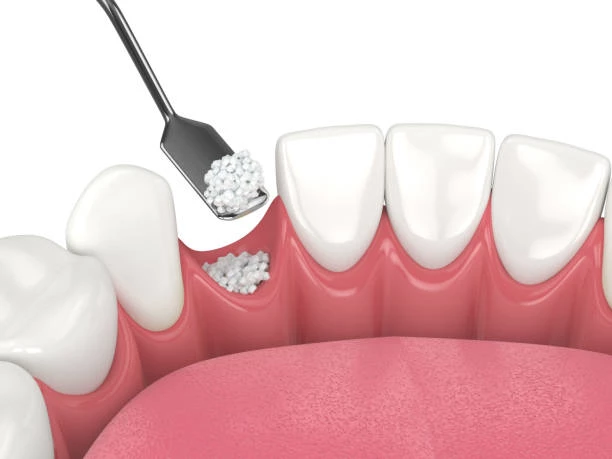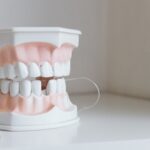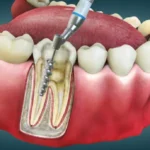Why Bone Grafting is Becoming the Backbone of Modern Implant Dentistry
When it comes to dental implants, the key to success often lies in something you can’t even see—bone grafting. It’s a procedure that’s quietly becoming the backbone of modern implant dentistry. Why? Because having enough healthy bone is crucial for the stability and longevity of dental implants, and bone grafting helps make that possible.
Whether it’s due to bone loss from age, injury, or disease, bone grafting gives dentists the foundation they need to place implants that function and feel like natural teeth. It’s a game-changer that’s making implants a viable option for more people than ever before. Let’s take a closer look at why bone grafting is becoming such a critical part of modern dentistry.
How does bone grafting improve the success rate of dental implants?
Bone grafting greatly improves the success rate of dental implants by providing a strong and healthy foundation for them to anchor into. Implants need adequate bone density and volume to stay secure and function like natural teeth.
When bone loss has occurred due to missing teeth, injury, or gum disease, a graft helps rebuild the jawbone, ensuring the implant has enough support to fuse properly through a process called osseointegration.
Without sufficient bone, implants can loosen or fail over time. Bone grafting minimizes that risk by restoring stability and balance to the jaw. It also improves the overall alignment and appearance of the implant, resulting in a stronger, longer-lasting, and more natural-looking smile.
What materials are commonly used for bone grafting in implant dentistry?
In implant dentistry, several types of materials can be used for bone grafting, each designed to support bone growth and provide a stable foundation for dental implants. The choice depends on the patient’s needs, bone condition, and treatment goals. Here are the most common materials:
- Autograft: Bone taken from the patient’s own body, usually from the jaw, hip, or chin. It’s considered the gold standard because it contains living bone cells that promote faster and more natural healing.
- Allograft: Bone from a donor obtained from a human tissue bank that has been treated and sanitized to ensure its safety. Because it is both biocompatible and convenient, it eliminates the requirement for a second surgical site of operation.
- Xenograft: A type of bone that originates from an animal, most typically bones from cows or bovines. It acts as a natural framework that, over time, stimulates the patient’s own bone to regenerate.
- Alloplast: For example, calcium phosphate or hydroxyapatite are examples of biocompatible minerals that are used to create a synthetic material. Patients who would rather not use natural bone sources have an alternative that is both safe and effective and is available to them.
Each material has unique benefits, but all aim to rebuild lost bone, promote healing, and create the solid support needed for long-term implant success. Your dentist will choose the best option based on your specific case.
When is bone grafting necessary before getting dental implants?
Bone grafting is necessary before getting dental implants when the jawbone isn’t strong or dense enough to support them. After tooth loss, the bone in that area can begin to shrink or deteriorate because it no longer receives stimulation from chewing. Over time, this can leave too little bone for an implant to anchor securely.
Bone grafting may also be necessary in the event of a jaw accident or trauma, advanced gum disease that leads to bone loss, or long-term denture wear that causes the bone structure to become thinner.
In rare instances, it may also be necessary to do a sinus lift or ridge augmentation in order to properly prepare the area. The process of grafting guarantees that dental implants have a strong foundation by repairing bone that has been lost. This increases the success rate of dental implants and their lifespan.
How long does it take to heal after a bone graft before implant placement?
The healing time after a bone graft varies depending on the size of the graft, the material used, and your body’s natural healing ability. On average, most patients need three to six months for the grafted bone to fully integrate and become strong enough to support a dental implant. Here’s a general breakdown:
- Minor bone grafts: Small bone grafts that are utilized to treat modest bone loss may heal within eight to twelve weeks, which enables implant placement to be completed more quickly.
- Moderate to large grafts: When larger portions of bone are being rebuilt, the healing process can take anywhere from four to six months or even more before the bone is ready to receive implants.
- Type of graft material: Because of their natural compatibility, autografts, which are harvested from your own bone, tend to heal more quickly than allografts or synthetic materials, which may take a little bit longer.
- Health factors: Healing can be considerably sped up by practicing proper mouth hygiene, maintaining a nutritious diet, and refraining from smoking. The recuperation process may be slowed down by conditions such as diabetes or poor circulation.
Your dentist will monitor your progress with X-rays or 3D scans to determine when the bone is stable enough for implant placement. Patience during this phase is key—allowing the graft to heal properly ensures your implant has the best possible foundation for long-term success.
Strengthen Your Smile with Expert Bone Grafting Today
Our skilled dental team uses advanced techniques to rebuild and strengthen your jawbone, creating the perfect foundation for secure, long-lasting dental implants. Whether you’ve experienced bone loss from missing teeth, gum disease, or injury, we offer personalized care to restore your oral health and smile stability.
With our gentle approach and modern technology, your comfort and results come first. Don’t let bone loss hold you back. Visit Paradise Dental Smiles today and take the first step toward a stronger, healthier, and more confident smile.




